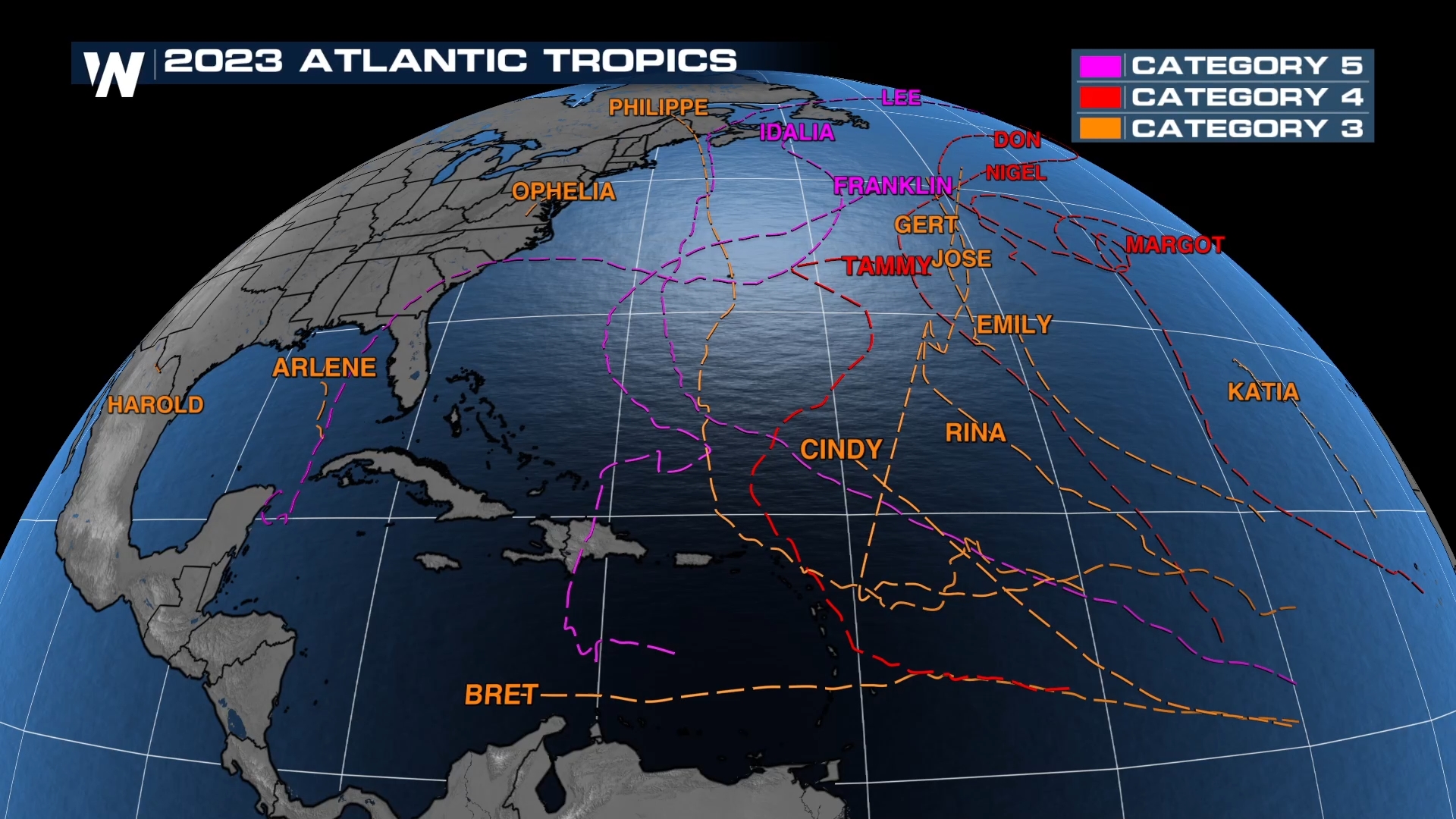Atlantic Hurricane Season Ends Above Average
The 2023 Atlantic hurricane season comes to a close officially on November 30th and the season ended up being above average for the number of named storms, with 19 total. NOAA is calling a sub-tropical storm that formed back in January and had no alerts or track with it the 20th storm of the 2023 season. We had 7 hurricanes and 3 major hurricanes which was average for the season.
After 3 consecutive years of La Nina, 2023 brought changes to the Atlantic hurricane season. It was a fight between El Nino which traditionally suppresses hurricane activity and historically high sea surface temperatures that fuel storms. The season will be remembered for landfalls in the U.S., Caribbean, and even the Canadian Maritimes. The season was a great example that just because it is an El Nino year doesn’t mean the Atlantic tropics will be quiet.
 For the 7th year in a row, the U.S. Gulf Coast was hit by a major hurricane … Idalia made landfall as a category 3 at Keaton Beach in late August, the strongest in the Big Bend of Florida in over 70 years. Storm surge reversed the flow of rivers and inundated the Tampa area.
For the 7th year in a row, the U.S. Gulf Coast was hit by a major hurricane … Idalia made landfall as a category 3 at Keaton Beach in late August, the strongest in the Big Bend of Florida in over 70 years. Storm surge reversed the flow of rivers and inundated the Tampa area.
Just weeks prior on the opposite side of the Gulf, Tropical Storm Harold was the first U.S. landfalling storm of the season on August 19th at Padre Island, Texas. The storm formed quickly in the warm waters of the Gulf before moving onshore.
Once again, the East Coast was a topic of tropical conversation … Ophelia was another short-lived tropical storm that developed off the coast of the Carolinas before making landfall at Emerald Isle and bringing surge to coastal North Carolina.
The strongest storm of the season, Hurricane Lee managed to reach CAT 5 status over the open waters of the Atlantic in early September. Lee will be remembered though for its extremely close pass to New England creating huge swells and coastal flooding in the Northeast. Lee went on to make landfall as a post-tropical cyclone in Nova Scotia.
But Lee wasn’t the only system to travel north of the border… in October Phillipe made a similar trek from the Caribbean to maritime Canada. Multiple storms brought international impacts too. In the Caribbean, our first landfalling system was Tropical Storm Bret in late June, in late August Tropical Storm Franklin made landfall in D.R. before rapidly intensifying into a CAT4 passing by Bermuda.
When we look at the amount of energy consumed by storms this year, we can see that the Accumulated Cyclone Energy, or "ACE" for short, is the number of days where we had a tropical cyclone in the basin. The average is between 74-126 days per season. This year was slightly above average with an ACE of 145.6. Most storms had an ACE of less than 10, but Hurricanes Lee and Franklin were long-lived storms, over 25 days each, that contributed to an above-average season.
